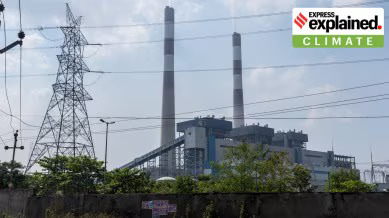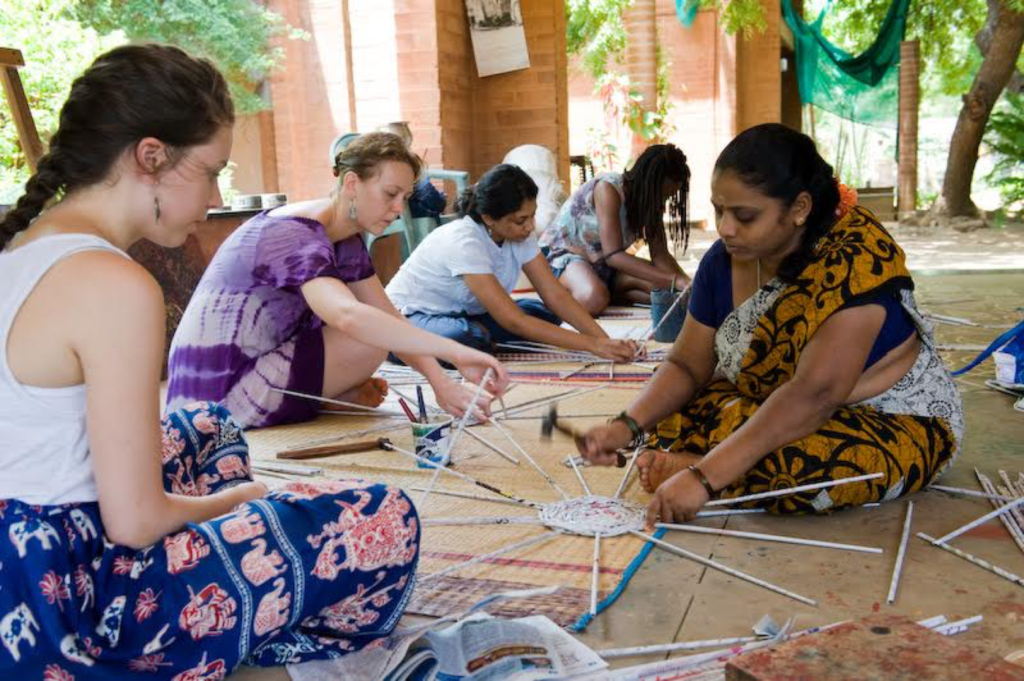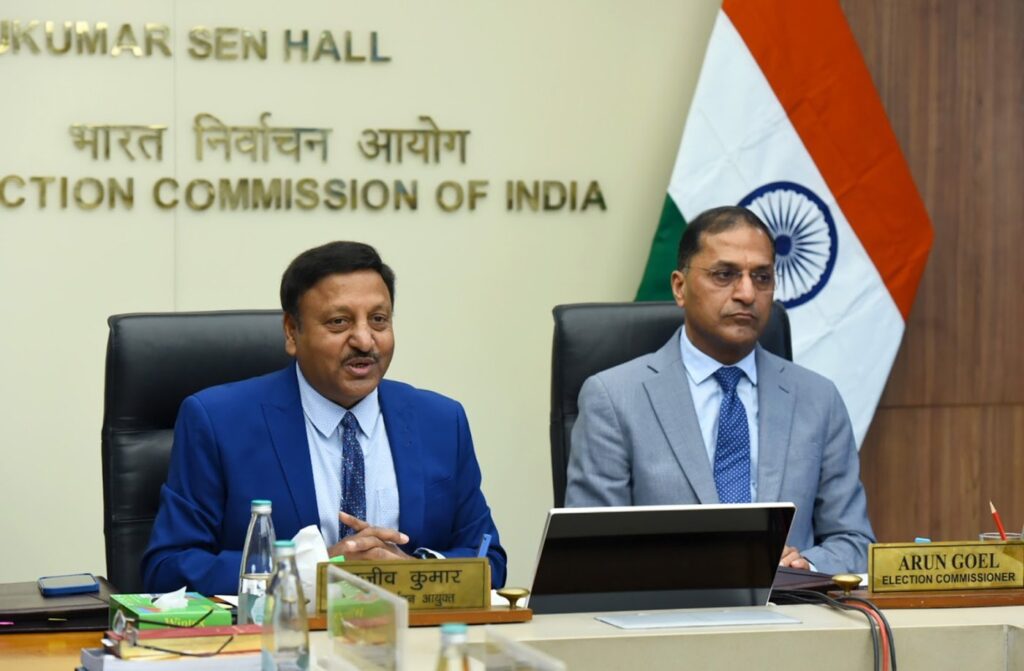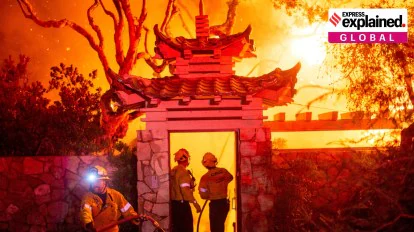Explained: India’s emissions inventory & efforts at mitigation
Source: The Indian Express
Syllabus: GS III Environment
Indian Biennial Update Report (BUR-4): A Key Milestone in Climate Action
Context
India recently submitted its Fourth Biennial Update Report (BUR-4) to the United Nations Framework Convention on Climate Change (UNFCCC). This report provides a comprehensive overview of India’s greenhouse gas (GHG) inventory, progress toward climate targets, and initiatives to address climate change.
What are Biennial Update Reports (BURs)?
BURs are periodic reports submitted by developing countries to the UNFCCC under the obligations of the Paris Agreement. These reports include:
- National GHG Inventory: Details of emission sources, sinks, and trends.
- Climate Action Plans: Updates on policies and programs to mitigate emissions.
- Support Received: Information on financial, technical, and capacity-building assistance.
- Socioeconomic and Forestry Data: Insights into national circumstances influencing emissions and mitigation actions.

Highlights of India’s BUR-4
1. GHG Inventory for 2020
- Total GHG Emissions: 2,959 million tonnes of CO₂ equivalent.
- Net GHG Emissions (after forestry absorption): 2,437 million tonnes of CO₂ equivalent.
- Emissions Intensity of GDP: Reduced by 36% from 2005 levels.
2. Sectoral Contributions to Emissions
- Energy Sector: 75.66% (Electricity production alone: 39%).
- Agriculture: 13.72%.
- Industry and Waste: 10.62%.
3. Progress on Commitments
- Emissions Intensity Reduction Target: India is on track to meet the goal of a 45% reduction by 2030.
- Non-Fossil Fuel Power Capacity: Achieved 46.52% as of 2024.
- Carbon Sink Creation: 2.29 billion tonnes of CO₂ equivalent added between 2005 and 2021.
4. Energy Efficiency Initiatives
- Perform, Achieve, and Trade (PAT): Saved 7.72 million tonnes of oil equivalent (Mtoe) and reduced 28.74 million tonnes of CO₂ emissions.
5. Technological Needs for Growth
- Identified requirements for advanced technologies such as ultra-efficient photovoltaics, floating wind turbines, and carbon capture and storage (CCS) for industrial sectors.
India’s Climate Commitments and Achievements
| Commitment | Status |
| Reduce GDP emissions intensity by 45% by 2030 | Achieved 36% reduction (2005–2020). |
| 50% installed power capacity from non-fossil fuels | Achieved 46.52% (as of October 2024). |
| Create 2.5–3 billion tonnes CO₂ sink by 2030 | Created 2.29 billion tonnes (2005–2021). |
| Net-zero emissions by 2070 | On track, with progress in renewable energy adoption and energy savings. |
Challenges in Achieving Climate Commitments
- Technological Barriers
- Limited access to advanced low-carbon technologies due to high costs and intellectual property restrictions.
- Financial Constraints
- Insufficient funding for large-scale renewable energy and carbon sink projects.
- Dependence on Fossil Fuels
- Sectors like transportation and industry face challenges in transitioning to cleaner energy sources.
- Agricultural Emissions
- Persistent methane emissions from livestock and rice cultivation remain a significant issue.
- Urbanization and Population Growth
- Rising energy demand and waste generation due to urbanization strain existing resources.
Way Ahead
- Strengthening Technology Transfer
- Facilitate affordable access to advanced climate technologies through international collaboration.
- Expanding Renewable Energy
- Accelerate investments in solar, wind, and other non-fossil fuel energy sources.
- Enhancing Forest Cover
- Implement robust afforestation programs to meet carbon sink targets.
- Promoting a Circular Economy
- Foster sustainable practices in industries and waste management to minimize emissions.
- Global Collaboration
- Leverage international support for finance, technology, and capacity-building to enhance mitigation efforts.
Conclusion
India’s BUR-4 showcases its substantial progress toward climate goals, especially in reducing emissions intensity and transitioning to renewable energy. However, challenges such as technological barriers, financial constraints, and sectoral dependencies necessitate a collaborative and strategic approach. By strengthening policy frameworks, fostering innovation, and enhancing international cooperation, India can not only achieve its commitments but also serve as a global leader in climate action.
President’s invite for ‘At Home’ to honour crafts from South
Source: The Hindu
Syllabus: GS I Art and Culture, Current Affairs
Context
As part of the celebrations marking 75 years of the Republic of India, the President of India has introduced a unique initiative during the Republic Day “At Home” reception. Invitees will receive curated boxes containing exquisite craft products representing the rich cultural heritage of southern India. These crafts are created under the “One District One Product” (ODOP) scheme, which promotes local artisans and their traditional crafts.
Craft Products in Focus
- Kalamkari Painted Bamboo Box (Andhra Pradesh)
- Features: Handcrafted bamboo boxes adorned with Nimmalakunta Kalamkari paintings, renowned for their intricate patterns and natural dyes.
- GI Tag State: Andhra Pradesh.
- Ikat-Pochampalli Cover (Telangana)
- Features: Reusable fabric cover showcasing the rich tradition of Ikat weaving, which involves the dyeing of yarns before weaving intricate patterns.
- GI Tag State: Telangana.
- Ganjifa Art Magnet (Karnataka)
- Features: Miniature magnets depicting Ganjifa art, traditionally used in hand-painted playing cards with mythological themes and vibrant designs.
- GI Tag State: Karnataka.
- Kanjeevaram Silk Pouch (Tamil Nadu)
- Features: Luxurious silk pouch symbolizing the timeless elegance of Kanjeevaram weaving, celebrated for its vibrant colors and intricate patterns.
- GI Tag State: Tamil Nadu.
- Etikopakka Dolls (Andhra Pradesh)
- Features: Handcrafted eco-friendly wooden dolls, created using traditional lacquer techniques and safe, natural dyes.
- GI Tag State: Andhra Pradesh.
- Screwpine Leaf Bookmark (Kerala)
- Features: Sustainable bookmarks woven from screwpine leaves, reflecting Kerala’s commitment to eco-friendly craftsmanship.
- GI Tag State: Kerala.

Significance of the Initiative
- Cultural Representation: Highlights the diverse and rich heritage of southern Indian crafts.
- Promotion of Artisans: Boosts recognition and demand for traditional crafts under the ODOP scheme.
- Sustainability Focus: Encourages eco-friendly and reusable products, supporting sustainable development.
- Global Outreach: Provides a platform for India’s cultural and artisanal heritage to be showcased to a broader audience, including dignitaries and international guests.
Conclusion
This initiative not only commemorates 75 years of the Republic of India but also underscores the importance of preserving and promoting India’s cultural heritage. By integrating traditional craftsmanship into national celebrations, it reinforces the role of artisans in India’s socio-economic and cultural fabric, while fostering sustainable and inclusive growth.
In a first, selection process for next Chief Election Commissioner casts wider net
Source: The Indian Express
Syllabus: GS II Polity and Governance
Revised Appointment Process for Chief Election Commissioner and Election Commissioners
Why in News?
The Chief Election Commissioner (CEC) and Other Election Commissioners (Appointment, Conditions of Service, and Term of Office) Act, 2023 has introduced a revised mechanism for appointing members of the Election Commission. For the first time, the process moves beyond the traditional seniority-based approach, aiming to bring greater inclusivity and transparency.
Constitutional Background
- Article 324: Empowers the President to appoint the CEC and ECs, subject to laws made by Parliament.
- Legislative Gap: Despite the constitutional provision, no specific Parliamentary law had been enacted until now.
- Existing Practice: In the absence of a law, appointments were made by the President based on the Prime Minister’s recommendations.
- Judicial Intervention: In Anoop Baranwal v. Union of India (2023), the Supreme Court directed the creation of a committee (PM, Leader of Opposition, and Chief Justice of India) to advise the President on these appointments until a law was enacted.
The 2023 Act is Parliament’s response to the SC’s direction, introducing a new statutory framework for the appointments.

Key Features of the New Appointment Process
- Structure of the Election Commission
- The Election Commission consists of the CEC and two Election Commissioners.
- Eligibility Criteria
- Only serving or former Secretary-level officers are eligible for appointment.
- Departure from Tradition
- Previously, the senior-most Election Commissioner would succeed the outgoing CEC.
- The Act expands the selection pool to candidates outside the Election Commission.
- Search Committee
- Chaired by the Minister of Law and Justice, with two senior officials.
- Prepares a panel of five candidates for consideration.
- Selection Committee
- Comprises the Prime Minister, a Cabinet Minister, and the Leader of the Opposition in the Lok Sabha.
- The committee can choose from the panel or nominate an external candidate.
Implications of the New Provisions
- Enhanced Government Flexibility
- The government has greater discretion in choosing the CEC and ECs, which could potentially impact the perception of independence.
- Wider Pool of Candidates
- Moving beyond seniority offers opportunities to select candidates with varied expertise.
- Potential for Political Debates
- The presence of the Leader of Opposition in the Selection Committee introduces a mechanism for debate but may also lead to political deadlock.
Concerns and Criticisms
- Exclusion of the Chief Justice of India (CJI)
- The Act excludes the CJI from the Selection Committee, contrary to the SC’s directive for judicial involvement to enhance credibility.
- This omission raises concerns about the potential erosion of institutional independence.
- Risk of Executive Overreach
- Critics, including former CEC O.P. Rawat, have pointed out that the framework may allow political influence over appointments.
- Legal Challenges
- Petitions challenging the exclusion of the CJI are pending before the Supreme Court, with hearings scheduled for February 2025.
- Credibility Issues
- With the Election Commission already under scrutiny for issues like electoral roll management and EVMs, the new provisions may not address existing concerns about its independence.
Conclusion
The 2023 Act represents a significant shift in the appointment process for the CEC and ECs, aiming for inclusivity and transparency. However, its effectiveness hinges on addressing concerns related to judicial exclusion and potential Executive dominance. The Supreme Court’s upcoming review will be critical in shaping the future of this framework and ensuring that the Election Commission retains its independence and credibility. A robust, bipartisan mechanism is essential to uphold the sanctity of India’s democratic processes.
Southern California wildfires 2025 explained: Why the blaze in winter, why it is so bad
Source: The Indian Express
Syllabus: GS III Environment and Disaster Management
California Wildfires 2025: Impact of Santa Ana Winds and Drought
Why in News?
California’s 2025 wildfires have claimed 10 lives, displaced over 130,000 people, and caused significant damage, including the destruction of celebrity homes in Los Angeles. The wildfires, occurring unusually in January, are driven by a combination of drought conditions, dense vegetation, and the infamous Santa Ana Winds.
California Wildfires 2025: An Overview
Timeline and Origin
- The first fire ignited on January 7, 2025, in the Pacific Palisades neighborhood of Los Angeles.
- Traditionally, wildfires in California occur between June and October, but these fires mark a deviation from historical patterns, occurring in the peak winter season.
Impact
- Human Loss: 10 fatalities and over 130,000 evacuations.
- Property Damage: Significant destruction, including homes in Hollywood Hills and delays in key events like the Oscars nominations.
Unusual Timing
- Southern California has been grappling with severe drought.
- By December 31, 2024, only 40.9% of the state was drought-free compared to 96.65% in 2023, indicating worsening arid conditions.
Key Causes of California Wildfires
1. Climatic and Vegetation Factors
- Wet-Dry Transition:
- Unusually wet winters in 2022 and 2023 led to rapid vegetation growth in Southern California.
- The winter of 2024–25 has been exceptionally dry, turning this vegetation into flammable material.
- NASA Data: Los Angeles recorded its driest start to a water year since 1944, with negligible rainfall since October 2024.
- Dry Vegetation: Dense vegetation from previous wet seasons has become fuel for the fires due to prolonged dry periods.
2. Santa Ana Winds
- Nature and Impact:
- These are strong, dry, and warm winds blowing westward from the Great Basin toward the coast.
- This year, the winds are unusually strong, amplifying the rapid spread of flames over dry vegetation and infrastructure.
- Mechanism of Santa Ana Winds:
- High-Pressure Systems: Originate from high-pressure systems over the Great Basin, pushing air toward low-pressure coastal areas.
- Descent from Higher Elevations: As air descends through mountain passes like the Sierra Nevada, it compresses, heats up, and loses moisture, creating warm, dry winds.
- Funnelling Effect: Narrow mountain passages accelerate wind speeds, with gusts often exceeding 160 km/h (100 mph).
3. Climate Change
- Rising global temperatures have intensified extreme weather events, including wildfires.
- Key Observations:
- Early snowmelts and warmer springs prolong dry seasons, increasing the moisture stress on vegetation.
- Drought conditions are worsened, creating ideal conditions for wildfire ignition and spread.
4. Potential Human Factors
- While the exact trigger remains unknown, initial investigations suggest power cables blown by strong winds as a possible cause.
Implications of the Wildfires

Environmental
- Destruction of ecosystems and habitats in a region already facing biodiversity challenges.
- Release of significant greenhouse gases, exacerbating climate change.
Social and Economic
- Displacement of communities and loss of lives.
- Economic losses due to property destruction, emergency response costs, and disruption of key activities like tourism and events.
Policy and Governance
- Highlights the urgency of addressing climate change through adaptive strategies.
- Reinforces the need for enhanced disaster management frameworks, particularly in wildfire-prone regions.
Way Forward
1. Climate Adaptation Measures
- Implement robust forest management strategies, including controlled burns and vegetation clearance.
- Increase investments in water conservation and drought-resilient crops to mitigate the impacts of prolonged dry spells.
2. Technological Interventions
- Employ satellite monitoring systems for early wildfire detection and real-time tracking.
- Strengthen power infrastructure to reduce risks of sparks from power cables.
3. Community Resilience
- Promote awareness campaigns on wildfire preparedness, including evacuation drills and safety measures.
- Provide financial and technical support to local communities to rebuild sustainably.
4. International Cooperation
- Leverage global platforms to share best practices in wildfire management and mitigation.
- Collaborate on climate research and the development of low-emission technologies.
Conclusion
The California Wildfires of 2025 underscore the growing influence of climate change, human-induced factors, and natural phenomena like the Santa Ana Winds on extreme weather events. A comprehensive, multi-pronged strategy—combining mitigation, adaptation, and global cooperation—is imperative to address these challenges and build resilience against future wildfires.